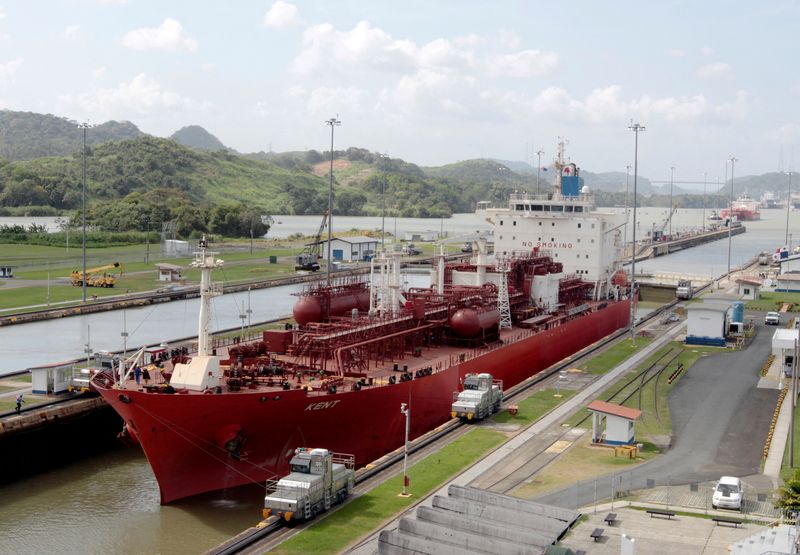By Arathy Somasekhar
HOUSTON (Reuters) - Oil tanker Cururo is taking the long way from Houston to Chile: sailing the length of South America's Atlantic coast, across the Strait of Magellan and heading up the Pacific coast before discharging.
The voyage could take 32 days and travel more than 10,000 nautical miles (18,520 km) before it ends next week, compared with about 23 days and less than 5,000 miles for a typical route through the Panama Canal.
The odyssey is shipping's new reality due to a severe drought in Panama that is expected to shift trade flows and push up freight costs.
The change will mean less U.S. gasoline heading to the West Coast of South America, particularly Chile, said Matt Smith, an analyst at ship tracking service Kpler. Chile will instead likely pull gasoline from Asia, he added.
Cururo headed for the Panama Canal last month and, unable to secure a slot for passage, changed its route. Two other refined products vessels, Green Sky and High Loyalty, also have taken longer routes to or from Chile that avoid the Panama Canal.
Taking longer routes or opting for bidding in Panama's daily slot auctions has made transportation more expensive for tankers and other vessel types with no priority in the canal.

U.S. diesel flows increasingly are heading to Europe as South America buys less due to Panama Canal logjams, Kpler data also showed. About 45% of U.S. diesel exports headed to Europe so far in December, compared with about 21% last month.
The redirection of refined product flows will also lead to higher shipping activity measured by tonne-miles and higher freight rates as U.S. tankers that typically go to South America now cross the Atlantic to Europe, or as ships from Asia travel to South America, analysts said.
